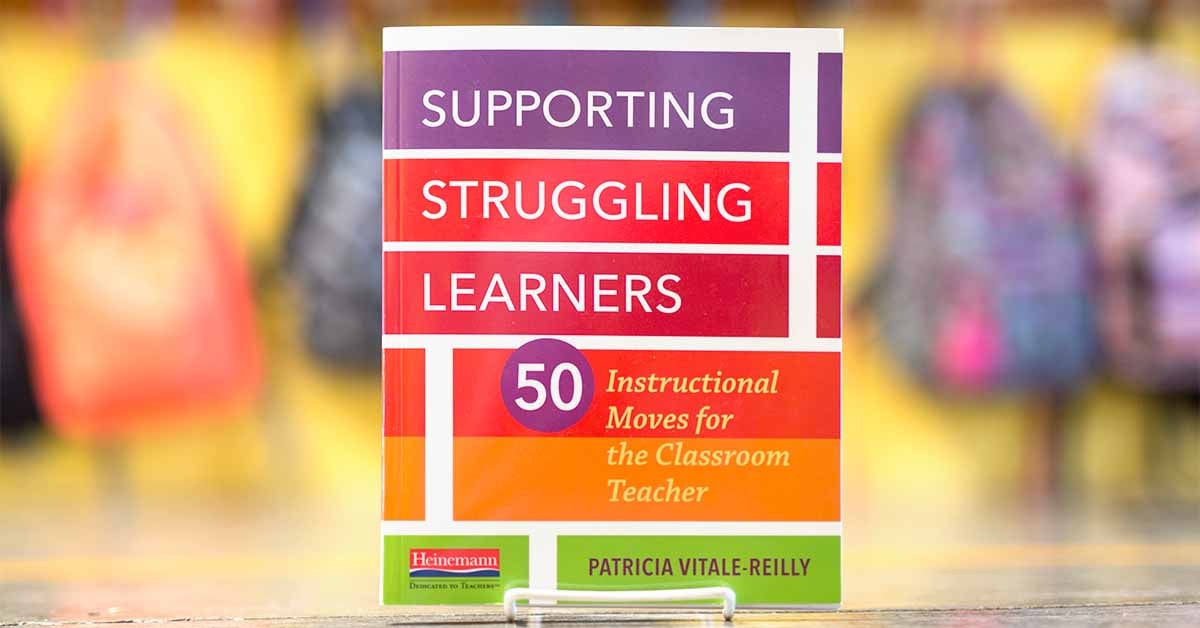 Adapted from Supporting Struggling Learners by Patricia Vitale-Reilly
Adapted from Supporting Struggling Learners by Patricia Vitale-Reilly
Now, more than ever, our students need effective communication skills to be successful, happy, and productive citizens of our classrooms and our world. Effective communication presents a challenge for many struggling learners. Some learners might have difficulty with language and may even have a language disability. Some might have a learning difference, weakness, or learning disability that is affected by underdeveloped listening and processing skills. And for others, their struggles with presentation and communication are a direct result of articulation and/or spoken language fluency issues.
The good news is that communication skills can be taught and developed, even with our struggling learners.
One way to do this is to provide lots of time to have guided conversations. In addition to differentiating through small-group instruction and one-on-one conferences, guided practice through whole-class conversations is effective.
Whole-class conversations can happen around a text (novel, short story, video, image, content area chapter, article, or blog) or a concept. One way to develop conversation skills, and simultaneously prepare students for reading and writing partnerships and clubs, is to have whole-class conversations about the instructional read-aloud. The idea is that the large group is going to come around one idea and talk together. In this model, the teacher serves as the facilitator or “guide on side” but allows students to do most of the talking.
Here, the more knowledgeable others are both the teacher and certain students— the ones with the gift for gab—and the structure of whole-class conversations provides the forum. Here is how a whole-class conversation can go:
- The class comes around a concept, idea, or text.
- The concept, idea, or text is put forth, and a specific topic of conversation is
agreed upon. In the early stages of whole-class conversation, the teacher may
put forth the specific topic of conversation. However, as the structure continues
to be utilized, students put forth possibilities and then agree upon the
specific topic. - An MKO (more knowledgeable other) starts the conversation. Again, this can
be the teacher, who can gradually release the floor to students who wish to
start the conversation. - Others join in the conversation. No hands are raised. Why no hands? When
have you ever raised your hand in a conversation with another person? Never.
Therefore, no hands here. The typical rule of thumb is that if two people go
to speak at once, one defers to the other, and that person who deferred will
speak next. - The teacher monitors and observes. She may jump in to pause on an essential
point so the community can say more, invite others into the conversation, connect
ideas stated, reiterate an idea, or turn the corner. - Gradually, all are asked to speak. Scaffolds are put into place to support quieter
voices, less confident speakers, students with language impairments, or
slow processers. Conversely, those who tend to speak a lot may be asked to
make room for other voices. - Develop conversation stamina. At first, whole-class conversations may be three
minutes long, but with practice, they can be ten to fifteen minutes. - Reflect to improve conversation. After the conversation, the group reflects.
What went well? Where were the trouble spots? Who had trouble getting into
the conversation? What can we do about that? In the beginning, the reflection
takes as much time as the conversation so that the skills are internalized and
issues can move forward to a more positive place.
Whole-class conversations provide struggling learners with plenty of models and time to practice conversation skills. Students can then take the newly acquired skills into small-group and partner conversations.
•••
Learn more about Supporting Struggling Learners on heinemann.com
 Patricia Vitale-Reilly is a national consultant, teacher, and former staff developer at the Teachers College Reading and Writing Project. With TCRWP, she helped school communities implement exemplary literacy instruction, and presented workshops and courses on the teaching of reading, writing, assessment, and literacy in the content areas. In 2003, Patty founded her own literacy consulting group, and currently works directly with school leaders, coaches, teachers, and students inside and outside of classrooms. She is dedicated to guiding schools and districts to set and realize goals that matter most in their learning communities, and to her belief that every student has the right and the capacity to learn. Follow her on Twitter @pattyvreilly
Patricia Vitale-Reilly is a national consultant, teacher, and former staff developer at the Teachers College Reading and Writing Project. With TCRWP, she helped school communities implement exemplary literacy instruction, and presented workshops and courses on the teaching of reading, writing, assessment, and literacy in the content areas. In 2003, Patty founded her own literacy consulting group, and currently works directly with school leaders, coaches, teachers, and students inside and outside of classrooms. She is dedicated to guiding schools and districts to set and realize goals that matter most in their learning communities, and to her belief that every student has the right and the capacity to learn. Follow her on Twitter @pattyvreilly



